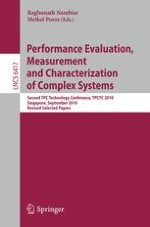This book constitutes the proceedings of the Second Technology Conference on Performance Evaluation and Benchmarking, TPCTC 2010, held in conjunction with the 36th International Conference on Very Large Data Bases, VLDB 2010, in Singapore, September 13-17, 2010. The 14 full papers and two keynote papers were carefully selected and reviewed from numerous submissions. This book considers issues such as appliance; business intelligence; cloud computing; complex event processing; database optimizations; data compression; energy and space efficiency, green computing; hardware innovations; high speed data generation; hybrid workloads; very large memory systems; and virtualization.
